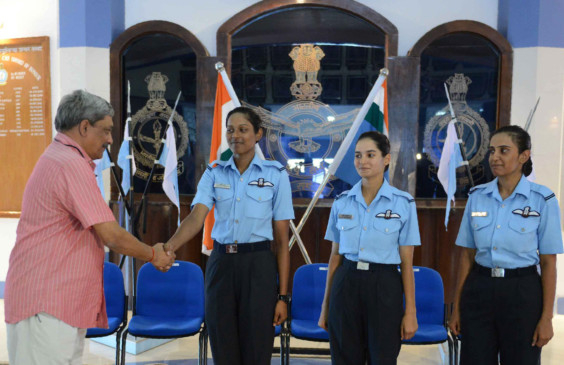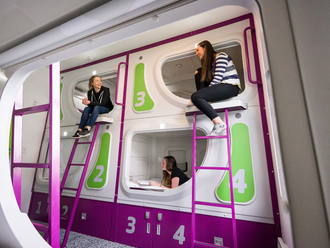
Breaking the gender barrier in a male-dominated force, the first-ever batch of female pilots is set to take up combat roles in the Indian Air Force (IAF).
The IAF recently made history by inducting Bhawana Kanth and Mohana Singh, both 24, and Avani Chaturvedi, 25, into its fighter squadron. The move comes 73 years after the Indian National Army of Subhash Chandra Bose, one of India’s great freedom fighters, raised the all-women Rani of Jhansi regiment to operate as guerilla infantry against the British.
Ushering in a new chapter for the Indian defence forces, the female pilots were formally commissioned by defence minister Manohar Parrikar at the passing out parade in June. Held at the Indian Air Force Academy in Dunigal, on the outskirts of Hyderabad, it has now paved the way for a path similar to their male counterparts.
Parrikar said the induction of female officers into combat roles is a milestone and a step towards creating gender parity in the armed forces. “If women in the Gulf countries can be engaged in offensive roles, I do not see why our forces should not have women,” he said.
Reiterating that it would open up opportunities for more women in the force, he indicated that women would be inducted into combat roles in other wings of the armed forces as well.
However, the forces first needed to build more gender-friendly facilities to accommodate women.
Turbulence ahead?
Not ruling out the possibility of having women aboard warships, tanks and in combat positions in infantry, which presently are open only to men, Parrikar said, “There are technical and administrative difficulties, which we are likely to face in certain areas. So, step by step we will see that [gender] parity is achieved and they will be accommodated depending on our infrastructure.
“Submarines have to be designed to accommodate both genders because the space available is very limited as they are designed in a particular manner. In combat ships too, similar difficulties exist.”
For now, the focus is on Kanth, Singh and Chaturvedi. The three volunteered, as IAF regulations require. The evaluation of their physical and mental aptitude, which the force insists had been gender-neutral, found them fit. And they trained on a par with men.
Dreams come true
Women were allowed to join the armed forces outside the medical stream for the first time in 1992. Though flying helicopters and transport aircraft since, they had been ruled out of combat operations. Their entry into the fighter combat stream will now allow the three women to complete their advanced training and move on to aircraft such as Sukhois and Tejas.
“This is the best and the biggest thing for me,” says Kanth.
“Flying has been a childhood dream. But when I joined, there was no option to be a fighter pilot. When the opportunity to opt for fighter stream came in December 2015, I grabbed it.”
Hailing from Darbhanga in Bihar, she says, “People around me were not convinced about my resolve. But I had the confidence, which skyrocketed during the training.”
Chaturvedi describes it as a “golden opportunity”. “What we have done until now is nothing extraordinary, as many female pilots have flown Pilatus and Kiran aircraft before us. But what we do from now on will be special.”
Born in Satna, Madhya Pradesh, to a family of army officers, she says her brother, who is also in the army, inspired her. “I want to be a good fighter pilot on whom the seniors can rely on when it comes to flying for live operations.”
Says Singh, a native of Jhunjhunu in Rajasthan, “I wanted to carry on the family legacy of serving the nation by being in defence services. And what better way than flying a fighter plane? It is a treat to fly the best fighter aircraft and learn from seniors.”
Granddaughter of a Flight Gunner in the Aviation Research Centre and daughter of a warrant officer in the IAF, Singh is thrilled to be following in their footsteps.
Smooth operation
Until now, the female pilots have undergone basic flying training on two types of aircraft — 55 flight hours on the Swiss Pilatus PC 7 Basic Trainer Aircraft and mandatory 87 hours on the Kiran, which initiated them on handling jets.
Kanth, Singh and Chaturvedi will now be trained at the air force station in Bidar, Karnataka. The officers are expected to complete 145 hours on British Hawk advanced jet trainers to hone their fighter flying skills by June next year. Thereafter, they will learn intensive combat manoeuvres and armament firing, handling the supersonic fighter jets — Sukhoi-30MKIs and Mirage 2000s.
Depending on an individual’s ability, it can take anywhere between two and two-and-a-half years to become a fully fledged fighter pilot ready to undertake all kinds of missions.








